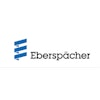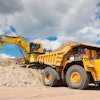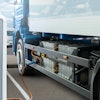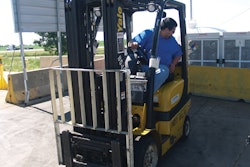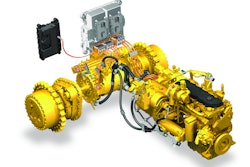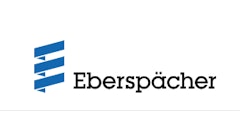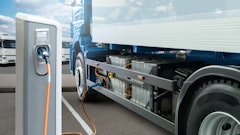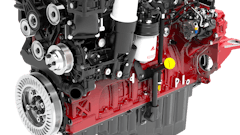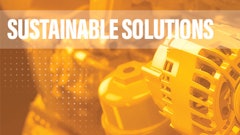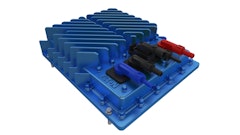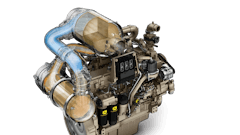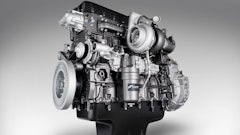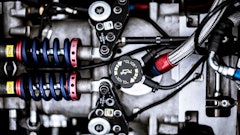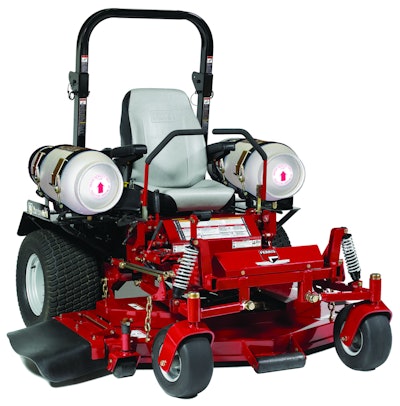
At this year’s Work Truck Show 2011, held in Indianapolis, IN, there was a lot of excitement about gaseous fuels, with propane in the forefront. The prevalence of propane is of no surprise considering propane autogas-driven vehicles have been around since the 1920s. It is also the third most commonly used fuel for internal combustion purposes in the world after gasoline and diesel.
“What’s really transformed the market recently has been the evolution of technology, especially in the last 5 years,” says Brian Feehan, vice president, the Propane Education and Research Council (PERC).
Who is PERC?
The mission of PERC is to promote the safe and efficient use of odorized propane gas through programs supporting safety, training, research and development, and commercialization of promising technologies. “We’re an industry funded organization. We invest funds into established partnerships and manufacturers.”
Currently there are more than 15 million propane autogas vehicles on the road worldwide with more than 270,000 in the U.S. according to the Dept. of Energy. Currently there are propane-powered school buses, work trucks, delivery vehicles, taxis and fleets on the road. Propane is also the most common alternative fuel globally. “It’s all across the world,” says Feehan. “The number one driver of the use of propane autogas is the price of conventional fuels, with the second being the increased importance on environmental concerns.”
Economic advantages
Propane autogas is an environmentally friendly fuel considered to be one of the lowest-cost strategies of introducing an alternative fuel to help mitigate increased emissions from conventional fuels in the transportation sector. There are policies supported by the introduction of products from manufacturers to build propane autogas vehicles to help meet emissions requirements and objectives from a policy perspective, but also from a private perspective in terms of reducing overall economic costs associated with conventional fuels in markets such as Europe and Asia.
“From an economic standpoint, propane is a very advantageous fuel for a couple of reasons,” begins Feehan. “Primarily, the cost of the fuel itself is less than gasoline. For example, in the U.S., the cost of a gallon of propane is about 30% less than the cost of gasoline.
“The demand of propane supply is met 90% by U.S. sources, so it’s a domestic product.” The fuel is transported and stored as a liquid making it easy to move from supply point to end user through common and established transport infrastructures such as rail and shipping.
Environmental benefits
Propane is a recognized alternative fuel by the Environmental Protection Agency (EPA). When used in on-road applications, the vehicles using autogas emit 12% less CO2, about 20% less NOx, and up to 60% less CO than gasoline-powered vehicles. “It’s a 17% to 24% reduction in greenhouse gases compared to gasoline,” adds Feehan.
“Two years ago, when conventional fuel prices escalated like they have today, we saw a huge push for investigation into propane fuel. People wanted more understanding of how propane could play a role in their business from a transportation standpoint, both on- and off-road.”
Propane also is nontoxic, so it’s not harmful to soil or water.
PERC’s emissions research provides life-cycle analysis of emissions of pollutants from propane-fueled systems. These studies respond to consumer demand for environmentally friendly fuels and equipment by quantifying propane emissions.
Machine gains
The use of propane on a vehicle does add approximately 12 lbs. to the overall weight of the vehicle, potentially negligible depending on the application. The advantage is the low pressure at which the liquid propane is stored – under 250 psi, whereas a fuel such as compressed natural gas is around 3,500 psi. “With just a little bit of pressure, we are able to liquefy propane for storage and transport,” says Feehan.
There is no extra wear and tear on other components in the vehicle due to the insignificant weight addition from the fuel system. “When you look at other gaseous fuels, they can add a couple hundred extra pounds. With that much additional weight you can see increased brake wear, for example,” explains Feehan.
Considering propane fuel
Feehan suggests when considering alternative fuels, that the company look into all of the costs: life cycle cost, infrastructure cost, product availability, maintenance, and fuel cost. “I think when you add all of those up, propane will be at the top of the options list.”
There are 2,500 publically accessible refueling stations in the U.S. currently (in every state), and PERC plans to put in 250 to 300 new stations over the next 12 to 18 months. Privately, PERC dispenses propane at thousands of locations above and beyond the public refueling stations.
In the short-term future for off-road applications, propane fuel injection and PERC’s own propane-diesel injection system, a project developed jointly with an OEM partner, is currently awaiting CARB (the California Air Resources Board) executive order for legal U.S. distribution of the system. PERC is in the process of developing the testing and certification data required by CARB for verification of the technology so it can not only be sold legally as a product, but also be verified as a control strategy to reduce emissions.
With the cleanness, portability and cost effectiveness of propane, the entire small engine category is a great opportunity, especially with emissions requirements in commercial mowing.
Room for improvement
One of the many missions of PERC is to invest resources in the research and development of propane, as well as improve its efficiency. “We work with OEMs and figure out how we can introduce propane products into existing applications with minimal impact on the manufacturing process. That’s where it really makes sense to establish partnerships with us and our OEM partners; we can introduce levels of research and development from a funding perspective, as well as engineering assistance, safety and training,” says Feehan.
The Propane Education and Research Council is always striving for improvements in the technology, delivery and utilization of propane fuel in vehicles, “but that’s across any industry, you always try to constantly improve efficiency,” Feehan concludes.

